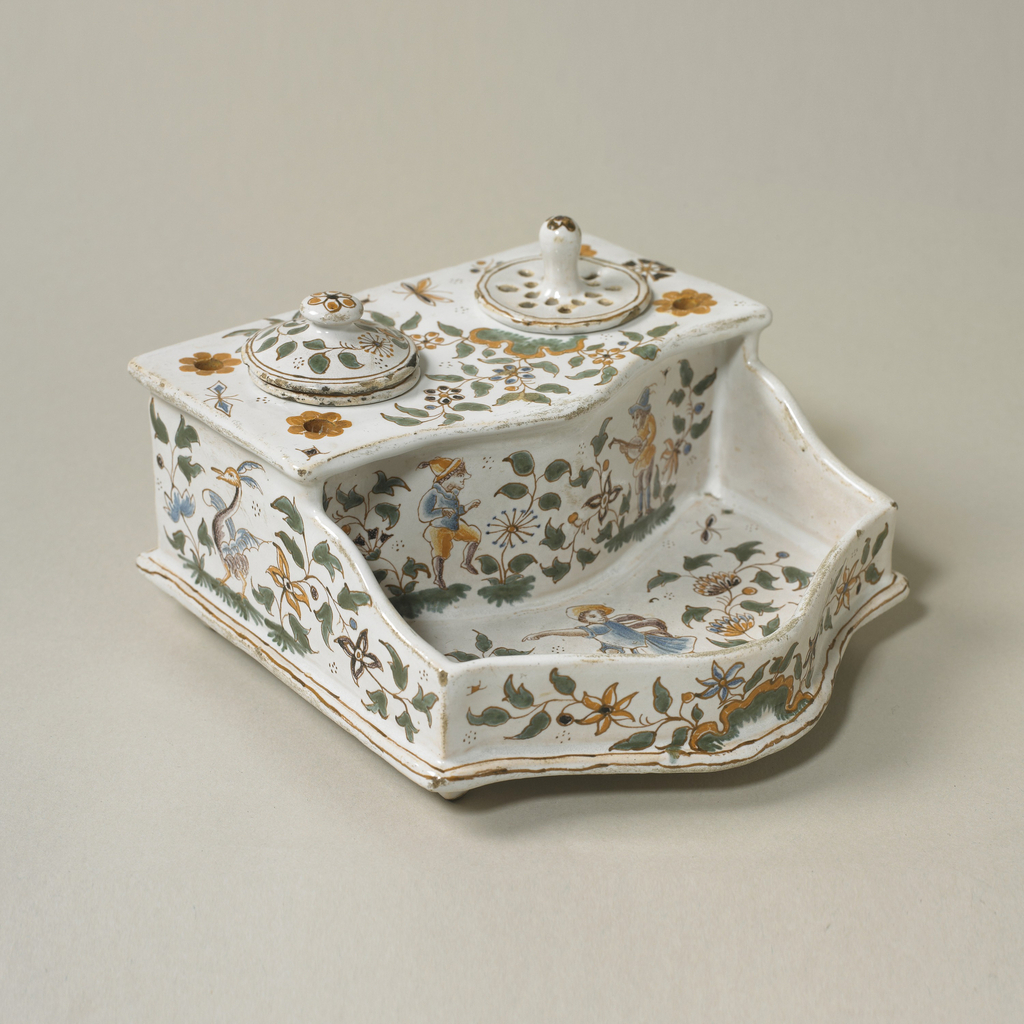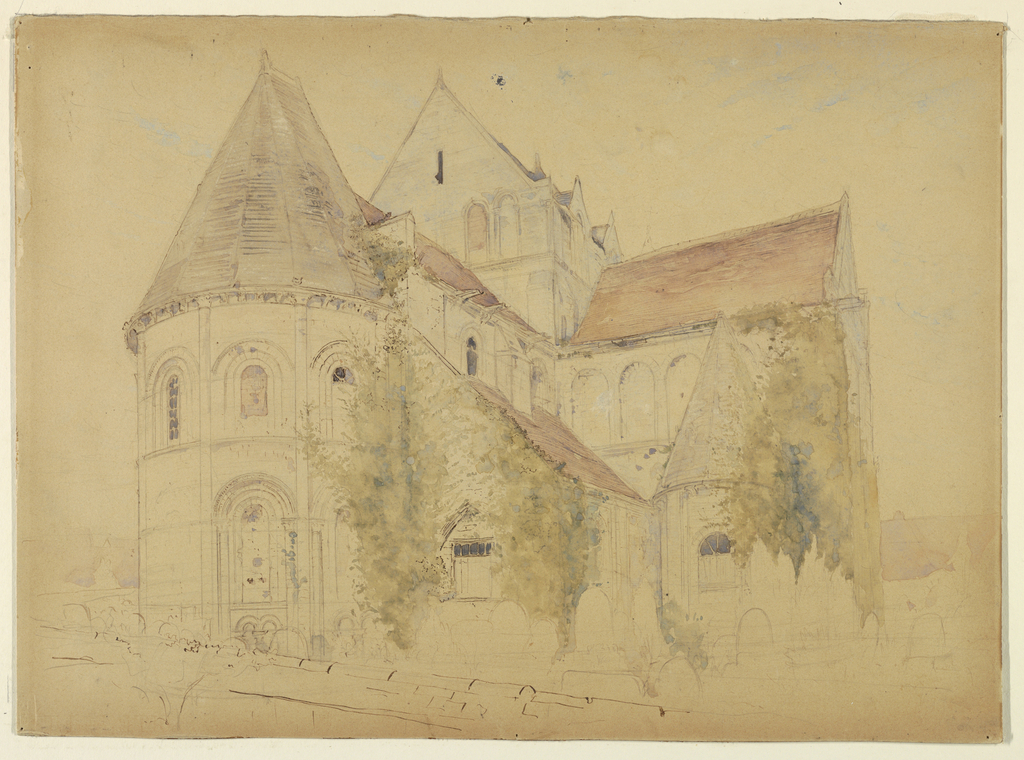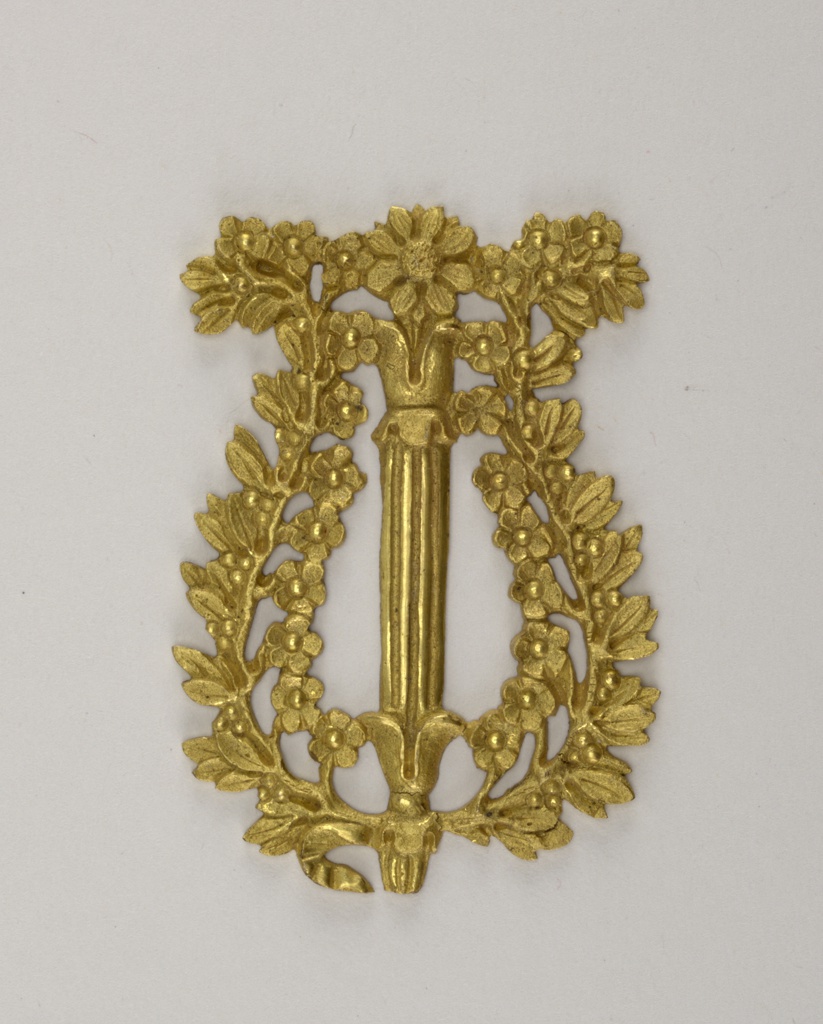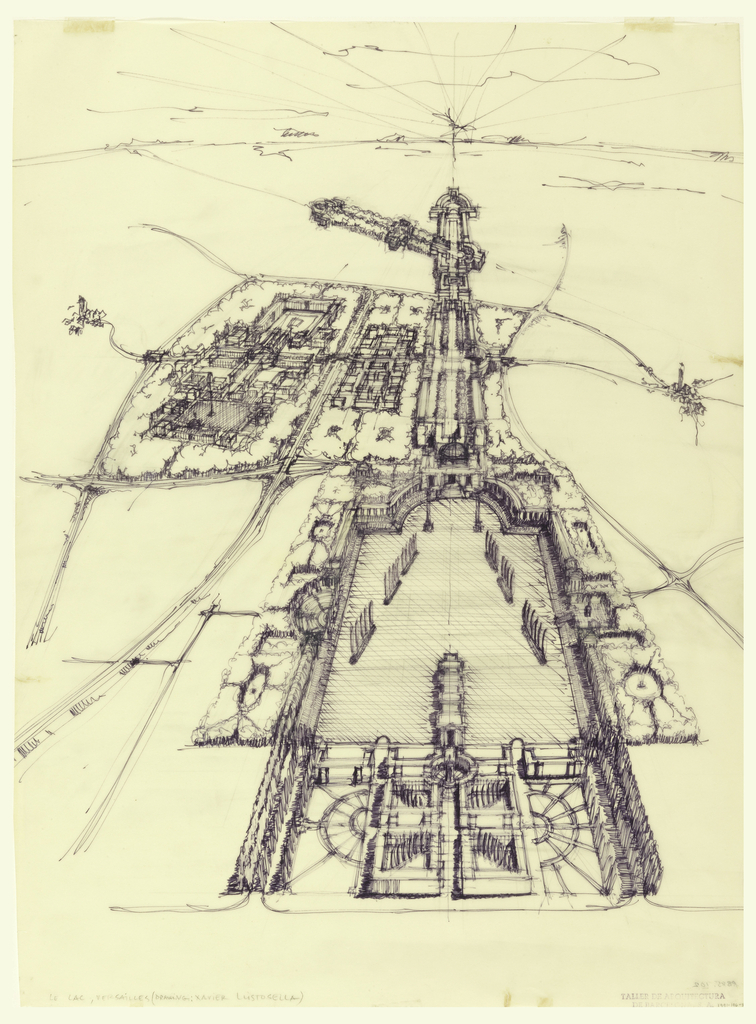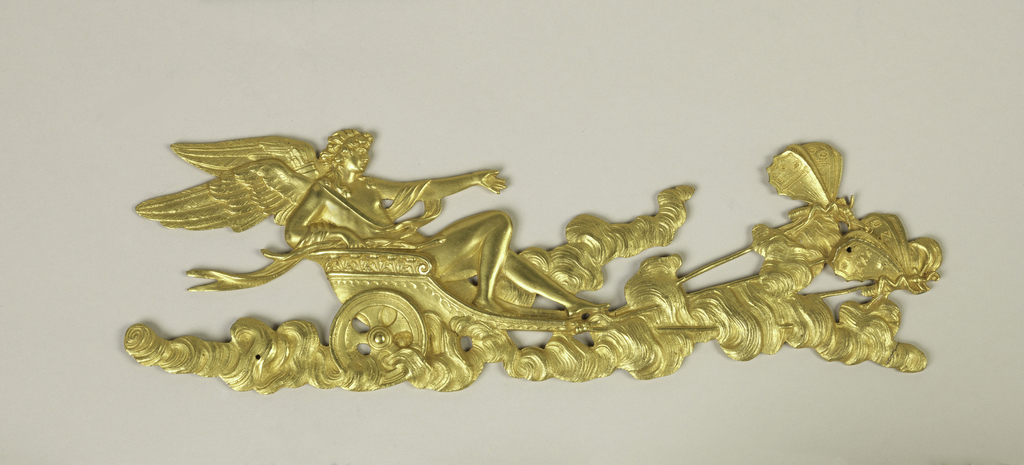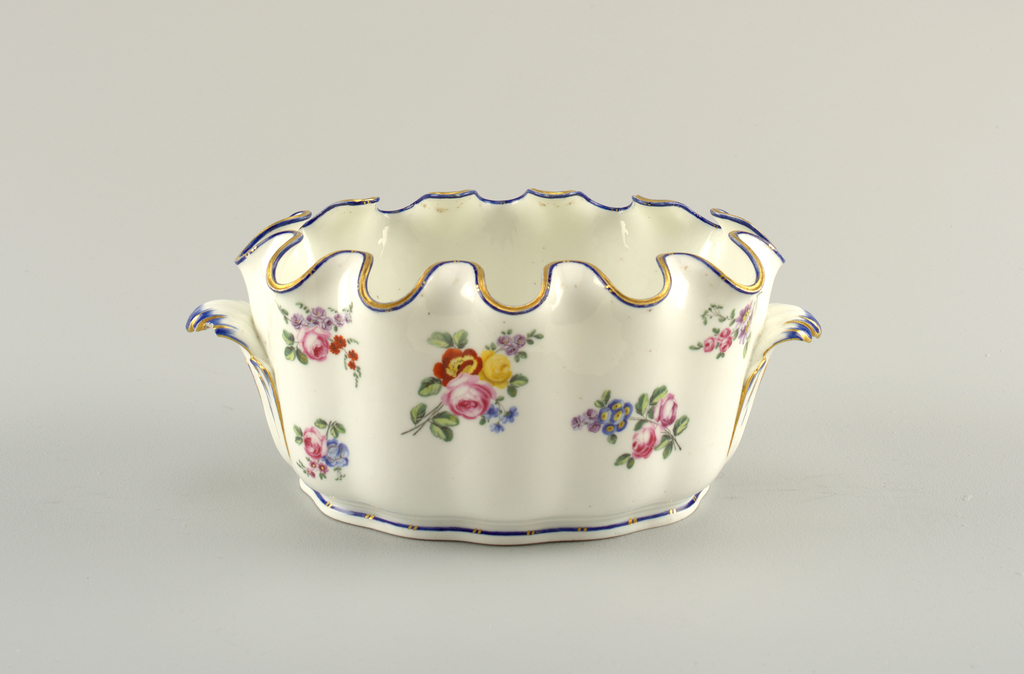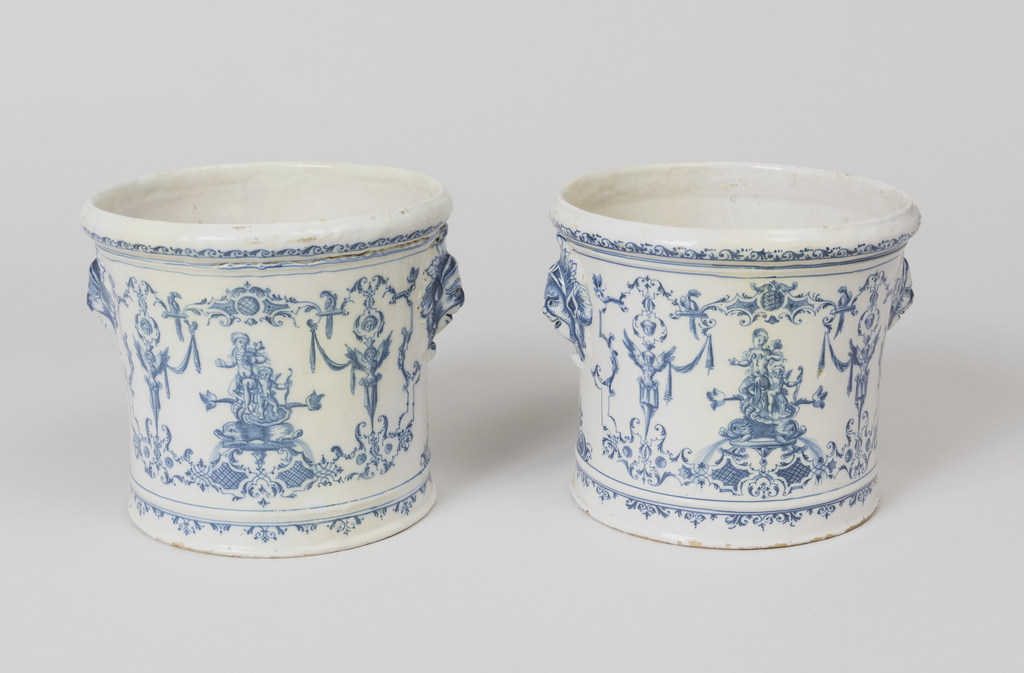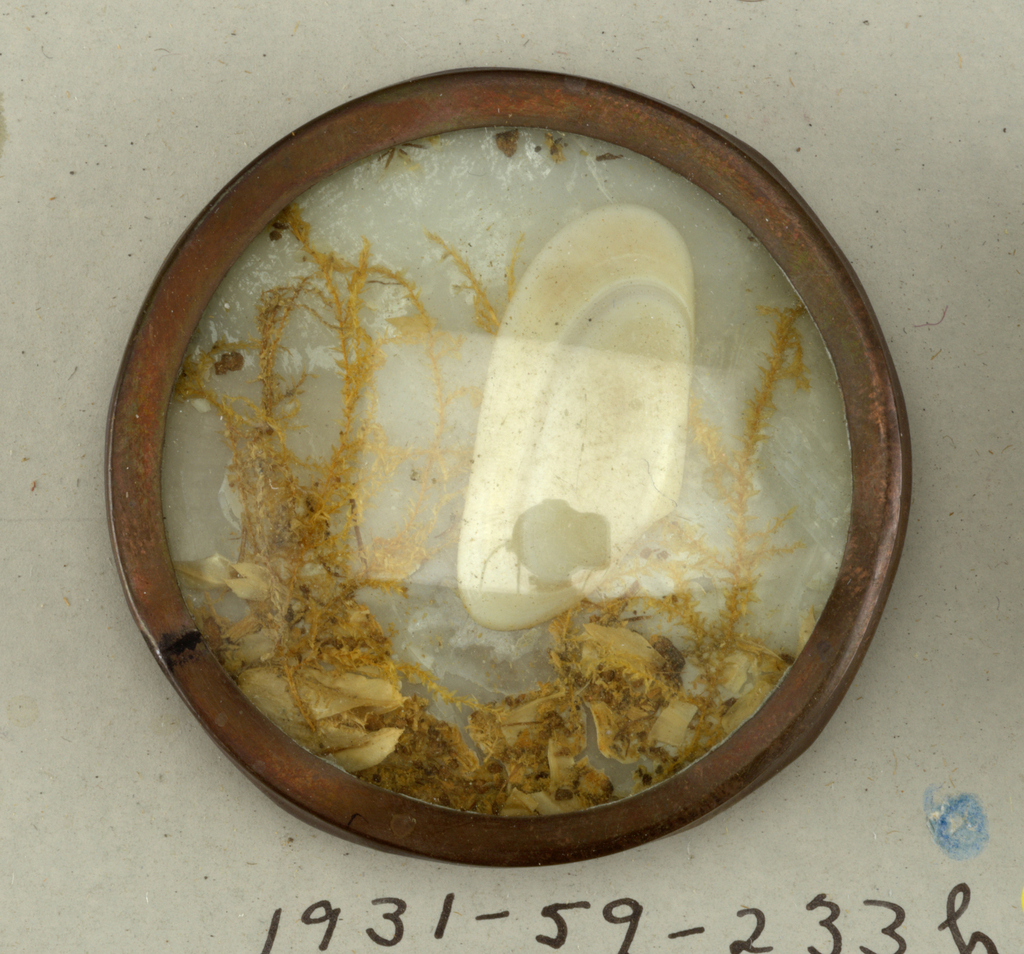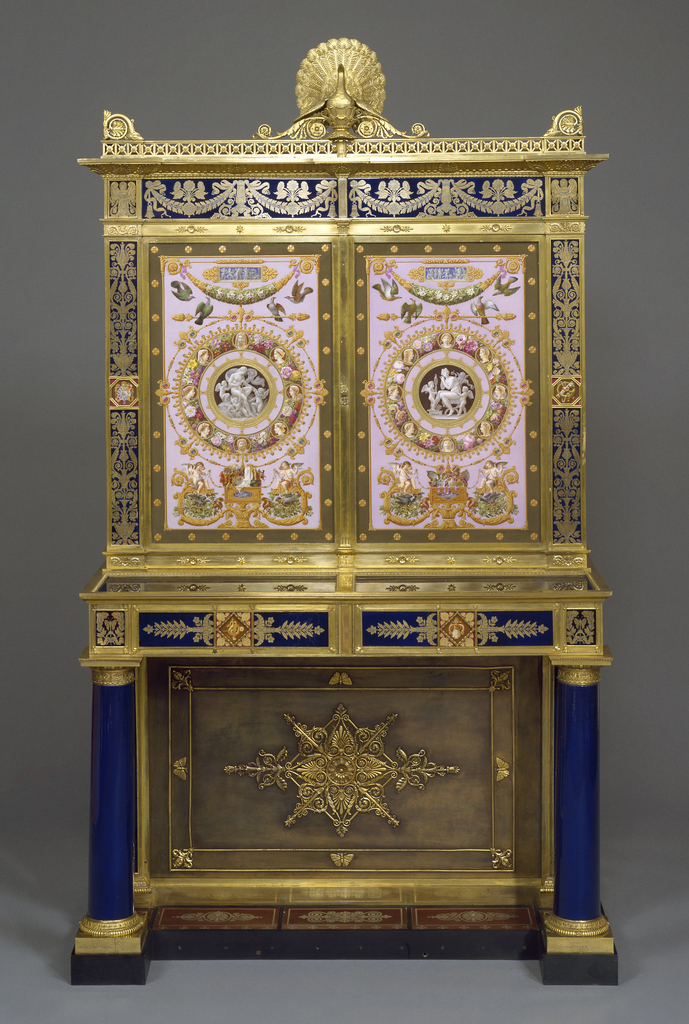Made of faience, a type of tin-glazed earthenware produced in France, this brightly colored inkstand held a pot for ink, a sander, pens, and various writing accouterments. Initially derived from Middle Eastern regions before the 9th century, faience developed in France during the 16th century; the French producers were largely influenced by Italian makers of...
Stanford White’s architectural legacy of beauty and sophistication is celebrated throughout New York City. Inspired by European architecture, White was a founder of the City Beautiful movement that spread across the country at the end of the nineteenth century. In 1878, as a young artist, White had traveled throughout Normandy and Belgium by train in...
Gilt bronze furniture mounts have long been an element of decoration in French interiors. In addition to their use as ornament, they were highly functional. Their gilded surfaces added value and appeal to what would typically be a basic utilitarian purpose: protection for furniture. The mounts were generally fixed to the edges, corners, and feet...
Ricardo Bofill’s architectural design, Aerial Perspective of the Lake, the Arcades, the Viaduct, and the Temple Housing Complex for St. Quentin-en-Yvelines (1981) displays the architect’s concept sketch for a monumental housing project to be constructed in the outskirts of Paris.[1] While the idea of constructing mass social housing in suburban Paris dates back to the...
This is a gilt bronze furniture mount made in France, in about 1800. Highly decorative mounts like this one were important elements in interior and furniture design from the late seventeenth to the early nineteenth centuries. They were created by master artisans trained in a strict guild system which applied exacting standards to the fabrication...
This verrière defines the classification of objects we call decorative arts: something that is both beautiful and functional. The function of the verrière is to cool wine glasses by inverting them and resting the feet and stems on the curved rim of the vessel, with the bowls immersed in cold water or ice. This type...
In the days before under-counter wine fridges, seaux à bouteilles, buckets made of earthenware or porcelain, were filled with ice water and used to keep bottles of wine cool. Their use continues to this day in the form of metal ice buckets used to keep white wine chilled table-side at fancy restaurants. When these objects were made,...
This button, from a set of nine, offers the viewer a chance to peek into the age of Enlightenment, a period of time when the human mind was breaking free from the constraints of the Church and the limitations of the Middle Ages. The Renaissance, primarily spanning the fifteenth through sixteenth centuries, is often thought...
The theme of this Royal Jewel Cabinet from France, dated 1824-26, is no doubt indulgence in all forms – especially love and extravagance. Its rich iconography displays symbols of love and jewels, where antiquity is mixed with early-nineteenth century depictions of flowers.[1] The cabinet is constructed of porcelain plaques in a gilt-bronze armature. A golden...
